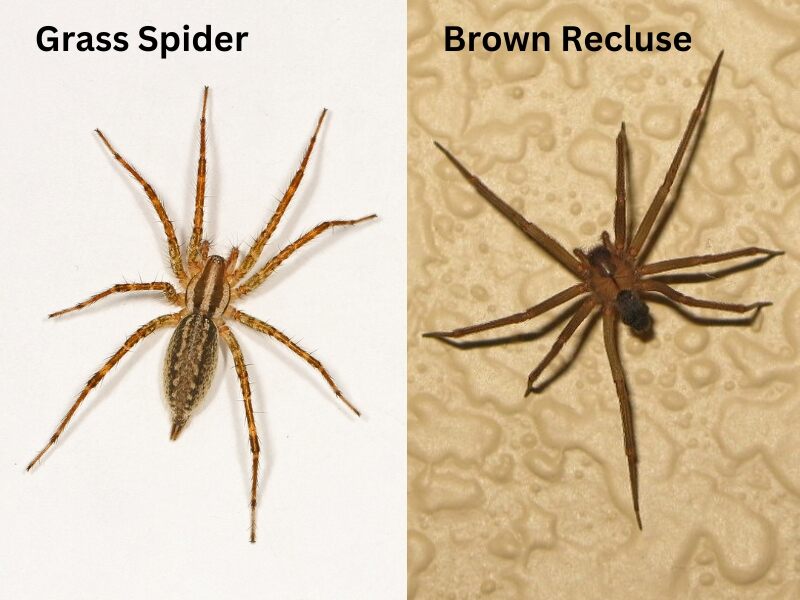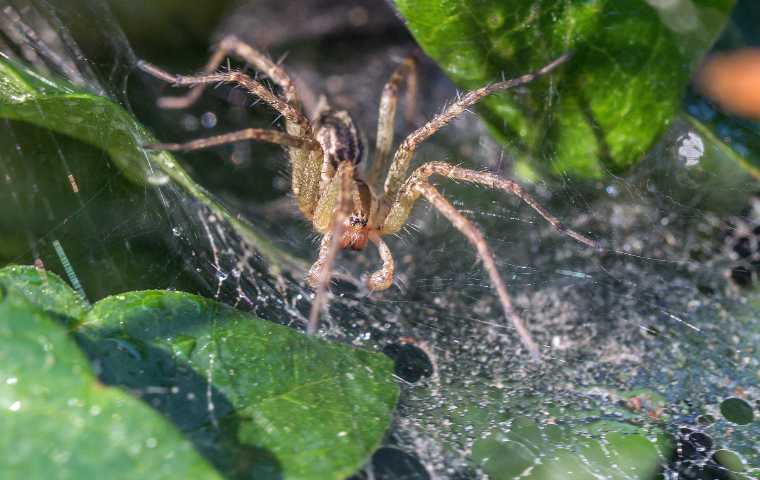Grass spiders, often overlooked in the world of arachnids, are intriguing creatures that play a significant role in our ecosystem. With their unique characteristics and behaviors, they deserve a closer look. In this article, we will explore various aspects of grass spiders, including their biology, habitat, behavior, and their importance in the environment.

What Are Grass Spiders?
Grass spiders belong to the family Agelenidae, which is commonly known as funnel weavers. They are characterized by their distinctive funnel-shaped webs, which they construct in grass, shrubs, and other low vegetation. These webs serve as traps for unsuspecting prey, primarily insects. Grass spiders are typically medium-sized, with a body length ranging from 0.25 to 1 inch, and they can vary in color from light brown to gray, often featuring dark stripes along their bodies.
Habitat and Distribution
Grass spiders are widely distributed across North America, thriving in various habitats, including fields, gardens, and forests. They prefer areas with abundant vegetation, where they can easily construct their webs and find shelter. These spiders are most commonly found in grassy areas, hence their name, but they can also inhabit other environments, such as woodlands and wetlands.
Physical Characteristics
Grass spiders exhibit several physical traits that make them unique. Their elongated bodies and long, slender legs enable them to move quickly and efficiently. The coloration of grass spiders helps them blend into their surroundings, providing effective camouflage against predators. Additionally, their large, eight eyes are arranged in a pattern that enhances their ability to detect movement, making them skilled hunters.
Web Construction
One of the most fascinating aspects of grass spiders is their web construction. Unlike traditional orb-weaver spiders, grass spiders create funnel-shaped webs that are designed to trap prey. These webs are typically constructed in a horizontal plane, with a narrow funnel leading to a retreat where the spider hides. When an insect wanders into the web, the grass spider quickly ambushes it, using its speed and agility to secure the catch.
Behavior and Hunting Techniques
Grass spiders are primarily nocturnal hunters, becoming active during the night when their prey is most abundant. They rely on their keen eyesight and quick reflexes to capture insects. When an unsuspecting insect falls into their web, the spider swiftly emerges from its hiding place to immobilize the prey with venom. Once the prey is subdued, the grass spider will consume it at its leisure.
Importance in the Ecosystem
Grass spiders play a crucial role in maintaining the balance of their ecosystems. As predators, they help control insect populations, preventing outbreaks that could harm plants and other wildlife. By preying on various insects, grass spiders contribute to the overall health of their environment. Furthermore, they serve as a food source for larger predators, such as birds and small mammals, highlighting their importance in the food chain.
Myths and Misconceptions
Despite their ecological significance, grass spiders are often misunderstood. Many people fear spiders and associate them with danger. However, grass spiders are generally harmless to humans. They are not aggressive and will only bite if provoked. Their bites can cause mild irritation, similar to a mosquito bite, but they are not venomous enough to pose a serious threat.
Are grass spiders dangerous to humans

Grass spiders are generally not considered dangerous to humans. These spiders, belonging to the family Agelenidae, do possess venom, but they are not aggressive and typically do not seek out human interaction. They may bite if they feel threatened or cornered, but such instances are rare.When a grass spider does bite, the reaction is usually mild and localized. Common symptoms include:
- Redness: The area around the bite may become red or slightly inflamed.
- Swelling: Some swelling can occur, resulting in a raised bump at the site of the bite.
- Itching: Itching is a common symptom, and you may feel an itchy sensation around the bite area.
- Pain or Discomfort: There may be mild discomfort or pain, although it is usually not severe.
- Small Puncture Marks: In some cases, you might see small puncture marks at the center of the bite, which are where the spider’s fangs entered the skin.
Grass spiders have small fangs, making it difficult for them to penetrate human skin. As a result, bites are more likely to occur in individuals with thinner skin, such as infants and the elderly. While the bites can lead to mild irritation, they are not considered medically significant.In rare cases, if a bite does occur, it can result in necrotic skin lesions or bacterial infections, but these outcomes are uncommon. Most people experience only minor symptoms that can be managed with basic first-aid measures, such as cleaning the area and applying a cold compress.Overall, grass spiders are beneficial to the ecosystem as they help control insect populations. They are not a significant threat to human health, and their presence can be advantageous in gardens and grassy areas. If you encounter a grass spider, it is best to leave it alone, as they are more likely to flee than engage in defensive behavior.
In conclusion, grass spiders are fascinating creatures that play an essential role in our ecosystems. Their unique web structures, hunting techniques, and contributions to insect population control make them worthy of appreciation. By understanding these remarkable arachnids, we can foster a greater respect for all the creatures that share our environment. Next time you see a grass spider in your garden or yard, take a moment to observe its intricate web and consider the vital role it plays in the natural world.
